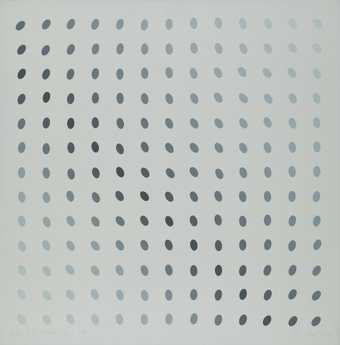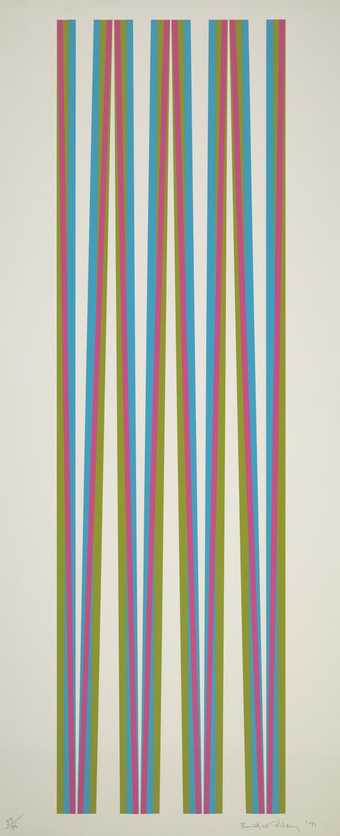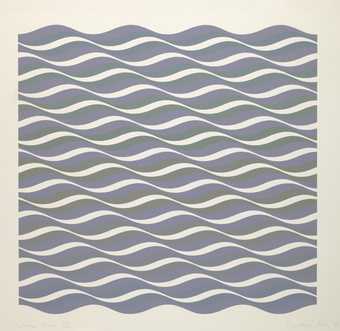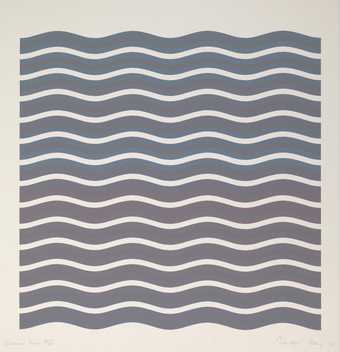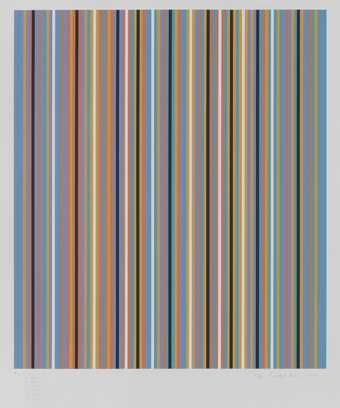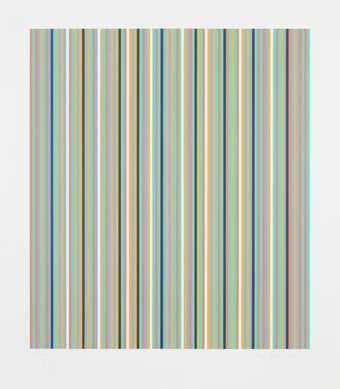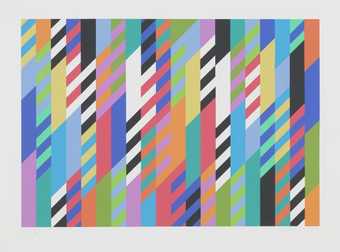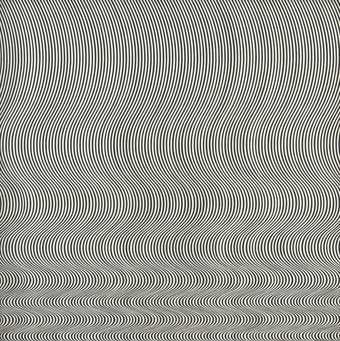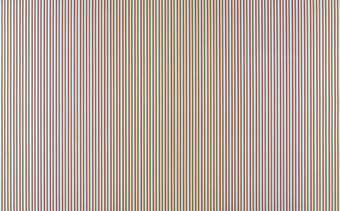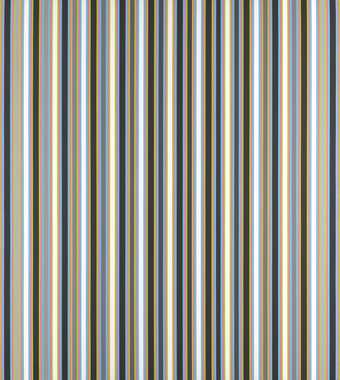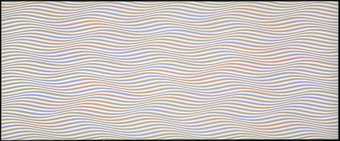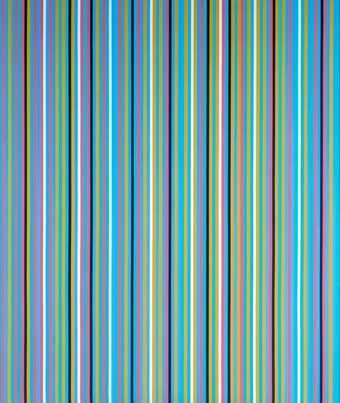
On loan
National Art Center (Tokyo, Japan): Light
- Artist
- Bridget Riley born 1931
- Medium
- Oil paint on canvas
- Dimensions
- Support: 1651 × 2277 mm
- Collection
- Tate
- Acquisition
- Purchased 1994
- Reference
- T06859
Summary
In the 1980s, following a visit to Egypt, Bridget Riley's work changed significantly. Adopting what she called an 'Egyptian Palette', her work attained a new chromatic intensity. In order to focus on issues of colour, she greatly simplified the formal organisation of her paintings. Between 1980 and 1985 she reduced her compositions to severe arrangements of vertical stripes, a device which she had used previously between 1967 and 1973. In 1986, Riley's work achieved even greater visual resonance as the result of her adoption of a diagonal compositional format. The composition is first of all worked out on paper in gouache by the artist, and then transferred onto canvas with the help of assistants.
Nataraja is an exemplary diagonal stripe painting. The surface is divided vertically and diagonally, creating a multiplicity of discrete areas of colour. The complexity of the colour relationships is formidable. Many of the colours exist in as many as twenty different shades. The position of each of these elements has been carefully judged in terms of correspondence, contrast and proportion.
A principal difficulty of this kind of composition is that of creating a unified and balanced field of visual sensation which, at the same time, is organised dynamically in terms of individual colours. Nataraja demonstrates Riley's success in relating similar and contrasting colours in a way that sustains a saturated intensity of colour across the entire picture plane.
Nataraja is a term from Hindu mythology, which means Lord of the Dance. It refers to the Hindu god Siva (Shiva) in his form as the cosmic dancer. Sculptures of the dancing Siva, who is usually presented with four arms, are displayed in most Saiva temples in South India. Siva's dance represents his importance as the source for all movement in the universe. Riley's use of the term Nataraja thus refers to the emphasis on rhythm and counter-rhythm, which are central elements in the painting.
Further reading:
Robert Kudielka (ed.), The Eye's Mind: Bridget Riley Collected Writings 1965-1999, London 1999
Bridget Riley Works 1961-1998, exhibition catalogue, Abbot Hall Art Gallery, Kendall 1998
Toby Treves
June 2000
Does this text contain inaccurate information or language that you feel we should improve or change? We would like to hear from you.
Display caption
Riley often alludes to her impressions of foreign cultures in her paintings. In 1981 she travelled to India. Nataraja is a term from Hindu mythology meaning ‘Lord of the Dance’. It refers to the Hindu God Shiva in his form as the cosmic dancer, who is usually depicted with many arms. In this painting, vertical bands of colour are cut across by diagonals, creating a sense of dynamic movement through intricate rhythm and counter-rhythm.
Gallery label, October 2016
Does this text contain inaccurate information or language that you feel we should improve or change? We would like to hear from you.
Explore
- abstraction(8,615)
-
- non-representational(6,161)
- formal qualities(12,454)
You might like
-
Bridget Riley Untitled [Nineteen Greys B]
1968 -
Bridget Riley Elongated Triangles 5
1971 -
Bridget Riley Coloured Greys III
1972 -
Bridget Riley Coloured Greys I
1972 -
Bridget Riley Coloured Greys II
1972 -
Bridget Riley Ra 2
1981 -
Bridget Riley Silvered 2
1981 -
Bridget Riley Fête
1989 -
Bridget Riley Fall
1963 -
Bridget Riley Late Morning
1967–8 -
Bridget Riley Cantus Firmus
1972–3 -
Bridget Riley Deny II
1967 -
Bridget Riley To a Summer’s Day 2
1980 -
Bridget Riley Achæan
1981 -
Bridget Riley Evoë 3
2003

